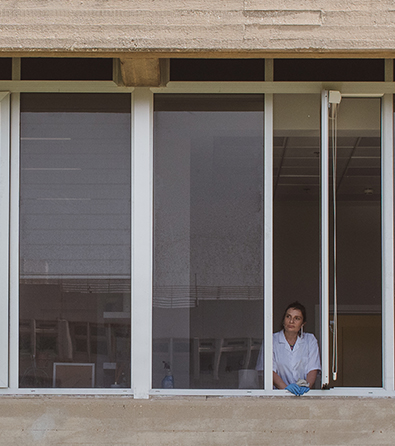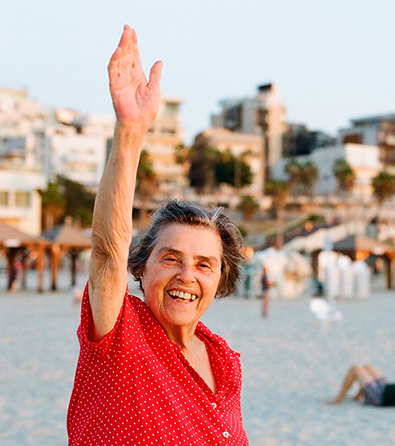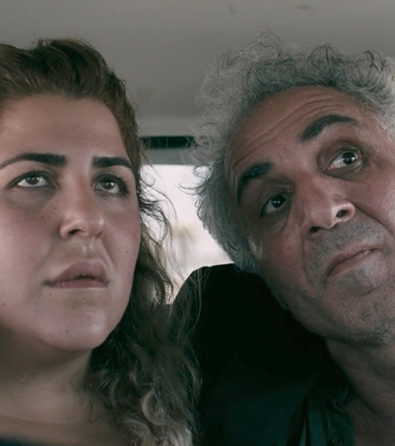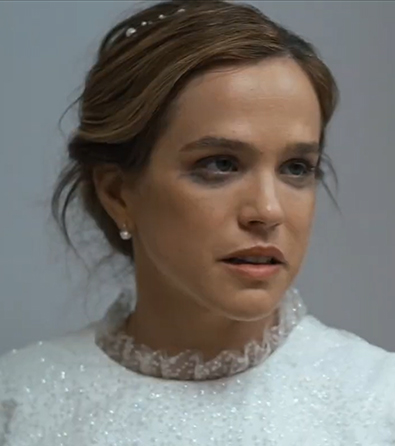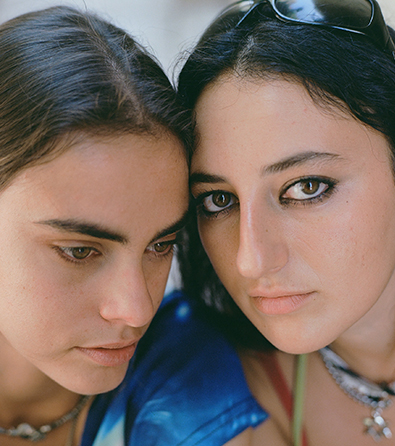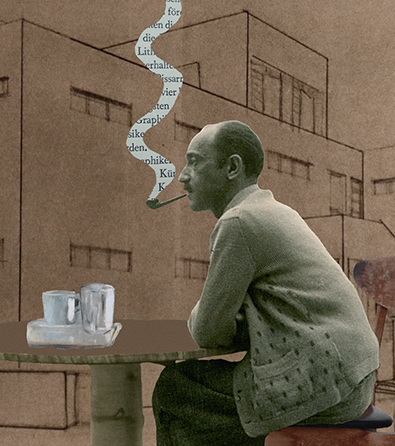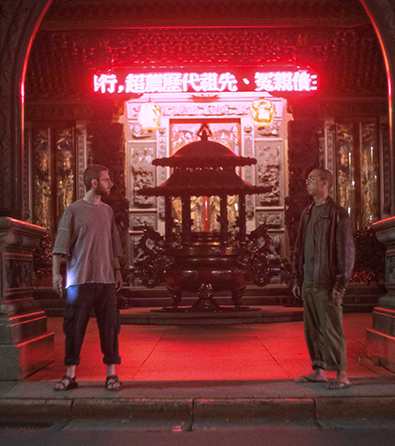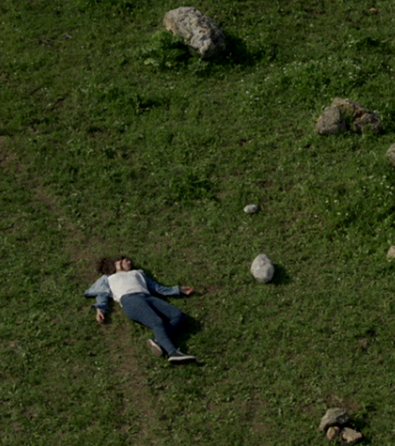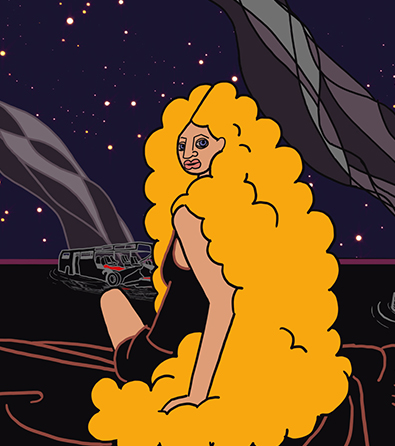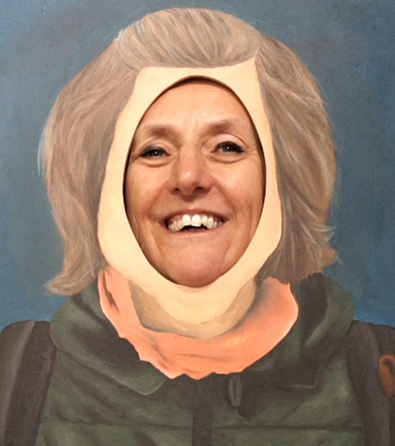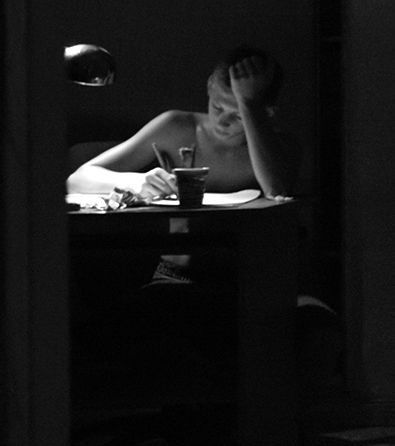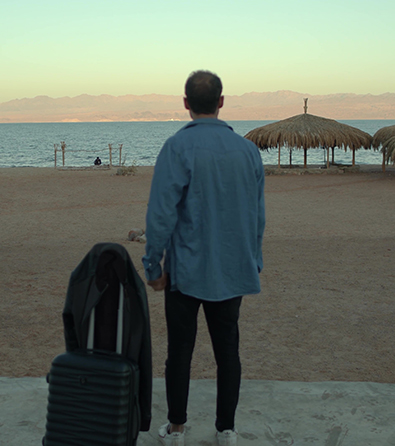The short film Last Days of Summer (20 minutes) is available at the top of the page.
* To watch this film, please approve YouTube/Vimeo cookies via the blue cookie icon at the bottom left of the screen.
Last Days of Summer, Nayef Hammoud’s short film, follows a day in the life of Darwish in Haifa as he tries to repair his broken fan. The situation grows more complicated when one of his neighbors in the building is murdered. The presence of the police only deepens the Arab community’s struggle to cope with both the loss and with the ongoing reality of internal violence within the Arab community in Israel in recent years. Darwish, meanwhile, is simply trying to please everyone so that he can return to his apartment and tend to his own concerns.
Hammoud’s film continues the distinctive cinematic language of his earlier work, The Day My Father Dies, which casts light on the complexities of Arab society in Israel as a whole, and on life in Haifa in particular, a city where Jewish and Arab communities live and work in coexistence.
From the opening scene, the film establishes its central image: Darwish asks an elderly shopkeeper if it is possible to repair the socket of his fan. The shopkeeper, surprised, replies, “Who repairs things today? Everyone just buys something new.” The question lingers: Is there any point in trying to mend a broken reality when it is easier to ignore it and continue as if nothing happened? At the very moment the shopkeeper finishes speaking, distant gunshots ring out, as if answering his words. The two pause for a moment, then the shopkeeper carries on as usual, highlighting how violence has become woven into the everyday routine.
The gunshots unsettle Darwish’s world, a rupture conveyed through framing and camera movement. The first scene is composed with precise, closed frames, but once Darwish leaves the shop the camera grows restless, with handheld shots becoming more prominent. The frame opens completely, reflecting both Darwish’s inner anxiety and the environment around him, where violence can erupt at any moment and from any direction.
The film’s use of the camera, together with the way the mise-en-scène and characters are revealed, deepens the viewer’s grasp of the complexities between individuals and the relationships among them. When Darwish begins to climb the stairs to his building, now the site of a murder investigation, he is stopped by Naqash, the police officer, who blocks his path. The two face each other in a balanced composition, a visual sign that neither holds real power within his own community.
This balance is broken when a neighbor, Nassar, one of the respected figures of the neighborhood, calls repeatedly to Naqash from below, positioned at the bottom of the frame. The camera tilts downward toward him. When Nassar places himself between Darwish and Naqash, he personifies the conflict between them: Naqash seeks to draw closer to Darwish to extract information about the victim, while Darwish wants only to return to his apartment and cross the police barrier, all while ensuring he does not appear to his neighbors as a collaborator with the police. To navigate this, Darwish insists on finding Naqash a cigarette, a gesture intended to earn his goodwill without giving anything away.
Darwish’s dilemma recalls Spike Lee’s Do the Right Thing, and particularly the situation of Mookie, an African American who works at the neighborhood pizzeria owned by Italian Americans. Lee’s film follows a New York neighborhood on a stifling summer day, where Mookie tries to navigate the neighborhood’s racial divides, simply to finish the day and collect his pay. The two films share additional elements: both take place over the course of a single day, with an emphasis on the extreme heat, and both portray a multicultural neighborhood with its complexities, including the distinctive characters who inhabit it. Among them are the three respected elders of the neighborhood, who serve as a kind of Greek chorus to the narrative.
In Lee’s world, the only option left to Mookie within a racist American society is to respond to violence with violence. Throughout the film, Lee depicts him as a figure striving to mediate between worlds, but by the end, when violence culminates in a fatal police killing, Mookie recognizes that he must answer with violence, and he does.
Hammoud’s film presents a different reality, one that reflects the circumstances of the Arab community in Israel. Its complexity lies in the dual struggle: on the one hand, confronting internal violence within the Arab community, and on the other, facing the police’s perception of Arabs as violent and dangerous. Darwish is caught in a liminal position, needing to prove to the officer that he is a “good guy,” while at the same time showing his neighbors that he is not a collaborator. Yet he has no real interest in the murder; all he wants is to carry on with his everyday life.
The role of the neighborhood elders underscores the difference between the two films. In Lee’s film, they provide a glimpse into the neighborhood’s state of mind, voiced from a distinctly male perspective, while also revealing more about certain characters. In Hammoud’s film, they appear as figures who try to guide Darwish on how to act, yet they take no active steps to resolve the situation. They oppose and criticize everything that represents Israeli hegemony, but they do not offer any legitimate or responsible form of resistance in its place.
For example, the neighborhood elders organize a prayer in memory of the murder victim. The camera, in a slow pan, reveals the faces of the neighbors as one of them speaks about eradicating violence within the Arab community and protecting it. The movement shows everyone in prayer and ends with Darwish, who watches them before joining in himself. The gap between their humanistic words and their actions, or lack of action, throughout the day underscores their emptiness. Their failure to show concern or make any effort to find a solution turns the prayer into a gesture of appearance only, not a means of real change. As Darwish’s gaze makes clear, this gap leaves him caught between two poles: his desire to bring change and his inability to achieve it.
Darwish’s liminal state becomes most apparent toward the end of the film. After he manages to repair his fan, he enjoys a brief moment of relief before the fan causes an electrical shutdown in his apartment. His attempts to fix his situation only lead to further problems. Naqash arrives and He helps Darwish, and the two share a conversation in the living room. Once again, they are framed symmetrically, but this time confined within the walls of the apartment. Naqash tries to repay Darwish for the cigarette he gave him, while also attempting to draw him in as an informant. The scene’s duration, filmed in a single take, creates a sense of suffocation that intensifies the unease surrounding Naqash’s intentions and actions. When Darwish suddenly stands up, Naqash immediately reaches for his gun. The gesture underscores the complexity of Darwish’s position: he is merely a means to Naqash’s end, and behind Naqash’s smiles and compliments, racism is always present.
The film concludes with Darwish returning to the electrical shop. Having given up, he decides to buy a new fan just as the rain begins to pour. The rain marks the end of summer and renders the fan unnecessary, yet Darwish chooses to purchase it all the same. Perhaps he cannot mend the situation himself, but he can at least be ready for the next summer, if, as the elderly shopkeeper reminds him, they live to see another day.
